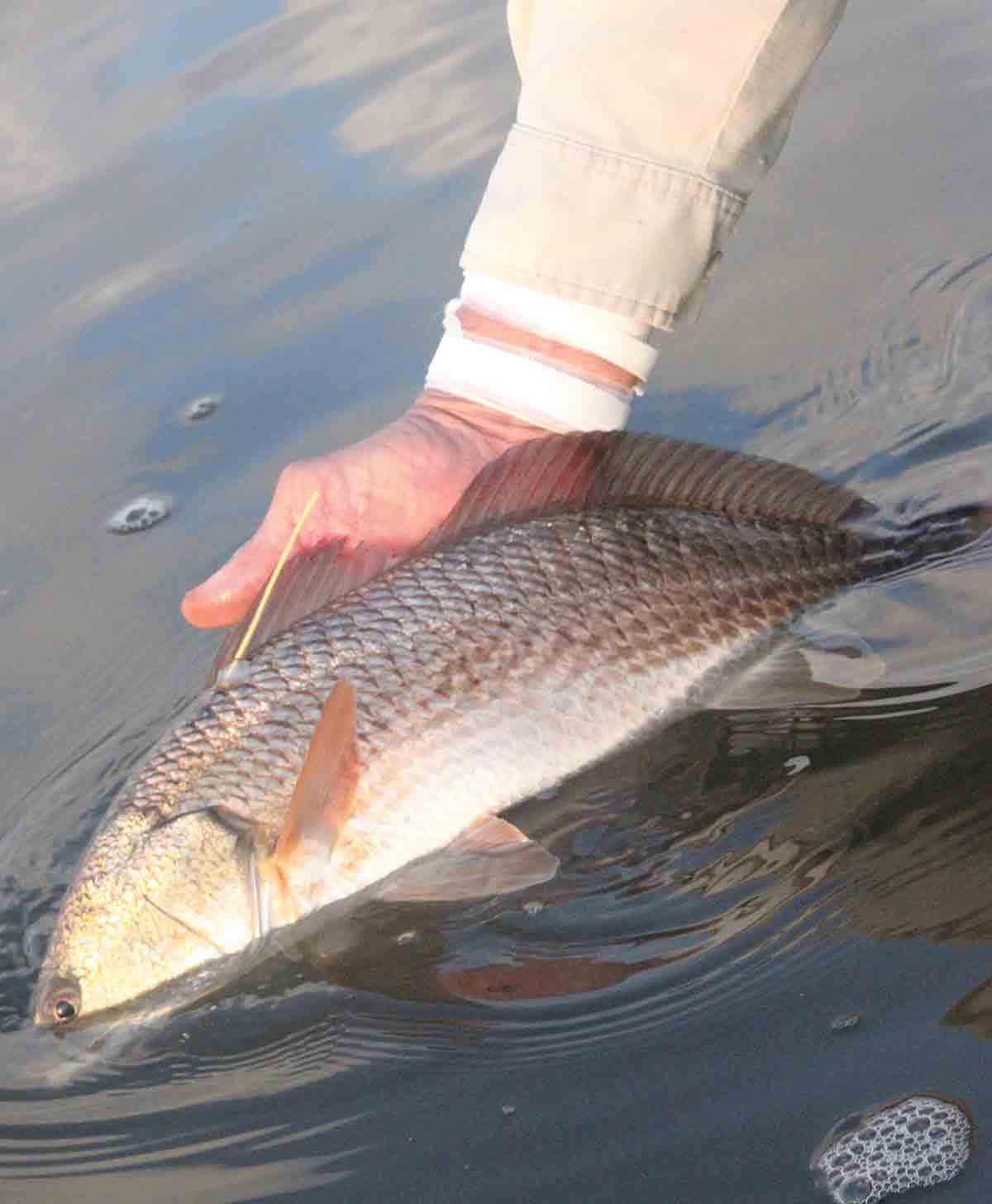
BY DARYL CARSON
One of the most exciting aspects of the tagging program is when a fish gets recaptured, because both the tagger and the lucky angler who caught the fish receive a recapture report showing a glimpse of the life history of that fish. Taggers get satisfaction from recapture reports, because the fish becomes personal to them and they can watch ‘their fish’ grow and travel to new locations.
The vast majority of recaptures occur within five miles of the initial tagging location, but there are some fish that cover much greater distances, like a redfish tagged in Lake Pontchartrain and recaptured in Mobile Bay, 150 miles away. For offshore species, recaptures have also shown that some fish move while others seem to stay put. Red snapper have been documented to move hundreds of miles at times, while many are retaught at the same rig or reef. Yellowfin tuna, also caught around oil and gas platforms, have a shown a similar diversity.
Beyond conventional tags, there are several devices, ranging in cost from a few hundred to more than a thousand dollars, which can help fisheries scientists unlock the secret lives of fish. These high tech tags help to fill in the gaps in fish movement between capture and recapture locations, through communication with remote listening stations, recording and archiving environmental data, or even transmitting to satellites in orbit. A current study in Lake Pontchartrain uses acoustic tags inserted in speckled trout and redfish to track fish movements. These little, battery powered transmitters are surgically implanted into the body cavity of the fish. The fish is released and the tag, which can last up to two years, is detected by a series of hydrophone receivers positioned in various habitats all around the lake. The Lake Pontchartrain acoustic telemetry project is a collaborative program with local anglers, universities, biologists and other agencies.
Reporting recaptures of tagged fish gives fisheries managers valabule information on fish movements, growth rates and more.
In addition to the 244 speckled trout and 64 redfish that have been tagged since the study began in 2012, the acoustic array also tracks tagged bull sharks and Gulf sturgeon when they enter the lake. To implant the tags, biologists work with recreational anglers who catch fish on the lake and then bring them to a “surgery boat” where the fish are held for observation. Only the healthiest fish undergo surgery to implant the tag, then after a recovery period they are released. Not only are the fish’s movements recorded, but anglers can keep tabs on the tagged fish through the state’s FishTracks website: https:// louisianafisheries.net/telemetry/. Fish implanted with these special acoustic tags are also marked with a blue dart tag—as opposed to the yellow tags used in the conventional tagging program. Anglers who catch one of these blue tagged fish are encouraged to release it so the data collection can continue.
As with all tagged fish, anglers are asked to report recaptures. Rewards are even offered to help encourage tag reporting. Rewards can be anything from apparel to gift cards, with the higher value prizes going for the return of the most expensive electronic tags.


Offshore tagging programs include red snapper and also yellow fin, which are sometimes recaptured near the same rig where they were first tagged.
The big-dollar, high-tech tags are the PSAT (pop-off satellite tags) and SPOT (smart position only tags) devices. PSAT tags record depth, temperature and position information. At a predetermined time (usually six months to a year), it releases from the fish, floats to the surface and transmits its information via satellite. Some of these tags are recovered by beachcombers after they wash ashore. SPOT tags are used on fish that frequent the surface. Attached to a fin or towed behind the fish, they transmit location information via satellite whenever the fish surfaces. The data derived from the tagging programs is posted to a fish tracking website that allows everyone to view the results for themselves. The tracking website shows all of the acoustically tagged fish in Lake Pontchartrain, as well as a sample of the species tagged offshore, like sharks and tuna.


Releasing recaptured fish helps keep the data chain going, and proper release techniques help insure high survival rates.
As both technology and volunteer involvement continue to increase, the future of tagging research is looking bright. It may even evolve into a new kind of fishing. The program’s top tagger, Captain Charlie Bush, tagged over 2,000 fish this last tagging season and he promotes the program on each charter trip he offers. While clients are welcome to keep their fish, he offers a discounted rate for those who choose to participate in his tagging efforts. If a fish is later reported as recaptured, he also notifies the angler who help tagged the fish to let them know the displacement distance, growth and number of days the fish was at large.
To check out tagging programs, sign up to be a tagger or to check out the latest fish tracks, visit www.fishla.org.